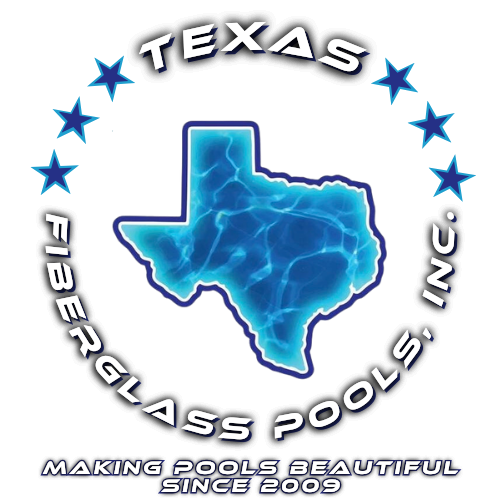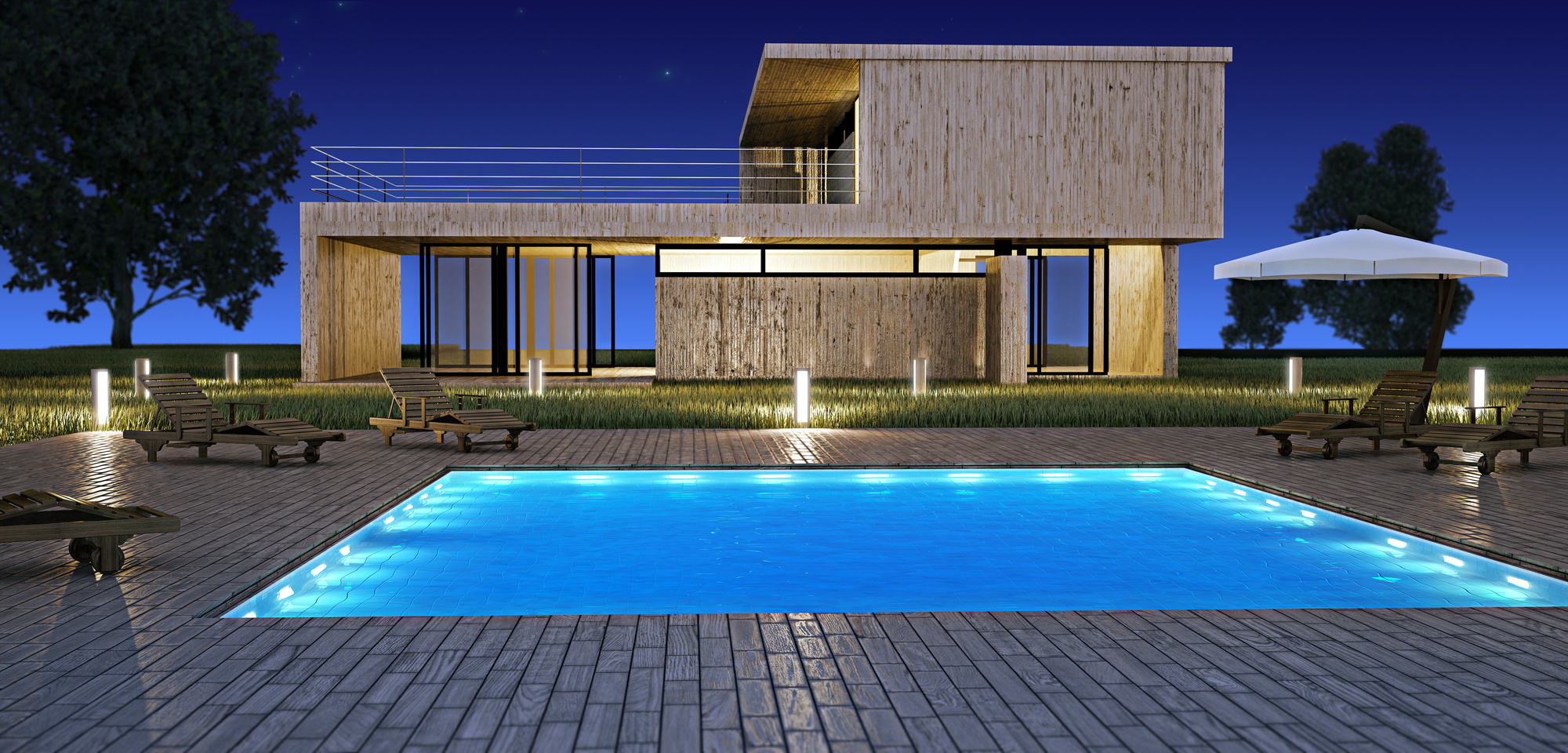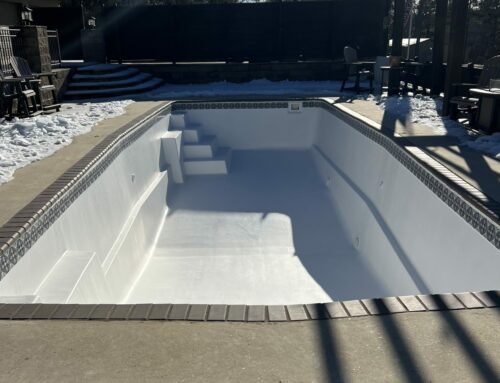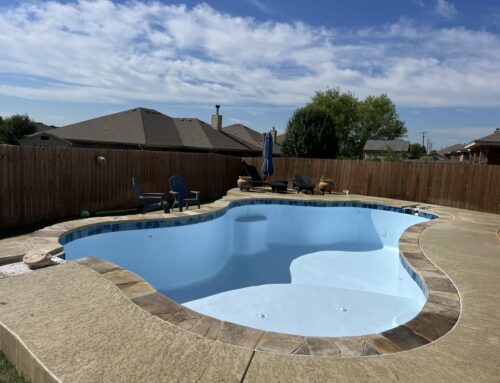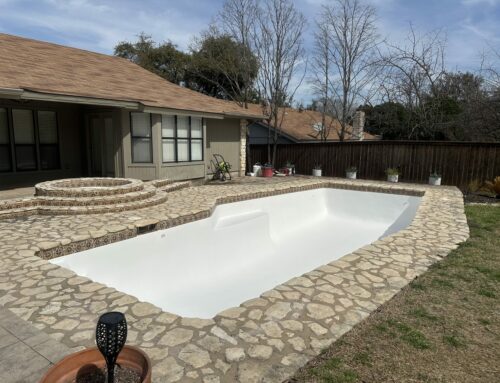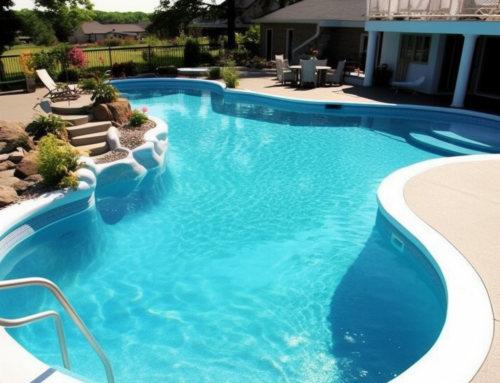With summer just around the corner, you may be dreaming of your very own backyard poolside oasis. A pool is a big home investment, so it is important to choose the right type for your family.
Should you choose a concrete or a fiberglass pool?
If the options have you dizzy, or you’re afraid the potential costs might just take you over the deep end, we’ve got the guide for you.
Read on to find out whether a concrete or fiberglass pool is perfect for your summer staycation.
Cost of Concrete Pools vs Fiberglass
Both fiberglass and concrete pools can have somewhat similar initial costs, depending on the size and complexity. Where the extra cost comes in is labor, time, and maintenance.
For concrete, the installation will include costs for excavation and site prep, reinforcement of the area, and the concrete itself. Additionally, you’ll have to pay for pump systems, sealing and painting, lighting, and access ladders or steps.
While a concrete pool may come in slightly under the initial price of a fiberglass one, custom shapes and features can drive the price significantly higher. It also comes with increased maintenance that we will detail further below.
A fiberglass option will include the same types of earthmoving and site prep. You’ll have the additional costs of transporting the factory-made shell to the site, and any moving equipment to lower it into place. A pump and its lines must be installed, along with lighting and entry to the pool.
They are pre-sealed with a smooth surface and do not need any painting or surface sealing once they are installed. More costs for each project will come with any needed fencing, walkways, heating systems, pool covers, and landscaping.
Fiberglass Pool Installation vs Concrete
Though both types of pools are very complex installations that are best left to professionals, concrete pools are the more labor and time-intensive of the two. Yet, fiberglass pools can cost just as much or more to install since the shell must be delivered.
Fiberglass pools are pre-cast in a factory setting and installed in one large piece. The difficulty with them comes in the delivery and positioning, as they commonly are delivered on a large truck and lowered into place by a crane.
The base for fiberglass pools is a large hole lined with sand or concrete. As far as time to install, it takes a few weeks to a month on average.
For concrete pools, the entire excavation must be reinforced with bars and mesh to stabilize the area. Concrete is dry-mixed on location and pressure-blown into place, which reduces porosity. This typically takes several months, not including drying and curing time.
Fiberglass Pool Surface vs Concrete
Pools with a concrete surface are rough and somewhat porous. Without a necessary chemical sealant, it will absorb moisture. Rough concrete surfaces are more prone to harboring bacteria and algae and can be hard on feet and hands.
Fiberglass pools, on the other hand, are naturally smooth. They are coated in a gel-like sealant which can be very slippery. Though less likely to cause abrasions, any built-in features such as stairs or seats do not provide traction and therefore create more likelihood for slips or falls, if the proper precautions are not taken.
Fiberglass Pool Maintenance vs Concrete
If you’re looking for a lower maintenance option, fiberglass is a good choice. The smooth surface provides a much less hospitable environment for any bacteria or algae, and fewer chemicals are required to maintain the balance of the water. You’ll put less work into this type of pool over its typical lifespan.
Weekly cleaning and scrubbing are necessary for a concrete pool, and more effort is required to maintain a chemical balance. Similarly to fiberglass pools, they must be resurfaced every 10-15 years. This resurfacing is more crucial for concrete pools to keep them moisture-sealed.
The condition and lifespan of a concrete pool are very dependent on the care you put into it. The better maintained it is, the longer you will protect your investment. This means your costs over time are greater than a fiberglass option.
Fiberglass Pool Durability vs Concrete
A fiberglass pool has an average lifespan of 20-25 years, but you may find fiberglass pool resurfacing or fiberglass pool crack repair necessary near the half-life of the pool. The shells are not reinforced the same way that a concrete pool is, so they have a bit of flexibility with any ground shifting, making fiberglass pool renovations easier than concrete renovations. However, this does not prevent them from suffering possible cracks. Fiberglass pool repair is typically easier than repairing a concrete pool, especially if there are cracks.
Concrete, in contrast, can last for several decades. With the proper maintenance, these durably-constructed pools can outlast their competition due to reinforced walls and heavy-duty materials. Like any pool, however, they are not entirely immune to settling or shifting.
Appearance and Aesthetics
One of the most appealing aspects of concrete construction is unlimited creativity. For someone with unique challenges in their backyard, these pools are easily designed to work around odd spaces. Options can include rocks, grottos, water features, and other beautiful custom designs.
The flexible nature of concrete designs means that each one can be customized to the landscape they will be installed in. This makes for unlimited sizes, shapes, and options. Concrete pools do not have the depth limits of fiberglass, which tend to be no deeper than six feet.
Fiberglass options are somewhat more limited, as they are pre-made from an existing set of design options. Since they cannot be shaped to fit a landscape, they must fit in an existing area. Limited space, trees, and other natural obstructions can make fiberglass pools more challenging to accommodate.
Since fiberglass pools are delivered in one piece, they can be no wider than 16 feet. They must fit within the guidelines of road transportation.
New styles of fiberglass pools arrive on the market all the time, with swim-outs or other features that were previously available only in concrete styles. So, while they do not have the ultimate design flexibility of concrete, there is still a wide range of options to choose from.
Warmth Retention
Concrete is a dense material that pulls the heat from its surrounding areas. Because of this, it takes longer to warm concrete pools. A heater must warm not only the water, but the concrete as well to avoid heat transfer.
A concrete pool, therefore, requires more energy to warm the water and maintain a pleasant temperature. Because of this, concrete pools may require more frequent pool plumbing repair.
Fiberglass shells, which are much thinner, do not absorb heat. Because of this, they retain heat longer than their concrete cousins. They also take much less time and energy to heat the water.
If you live in a very warm climate, concrete heating will not be as challenging. However, if your region is prone to temperature fluctuation, the cost of heating a fiberglass pool will likely be more efficient.
Return on Investment
There is little difference in resale value between the two types of pools, according to the National Association of Realtors. If your pool is well cared for, it will add value to your home.
Depending on the climate, pool maintenance considerations do not seem to be a large detractor to potential home buyers. In fact, it may be harder to sell your home if you are the only one in the neighborhood without one.
Is a Fiberglass or Concrete Pool Right For You?
As we’ve shown here, there are great benefits and things to consider for either variety of pools. At the end of the day, the decision comes down to what type fits best with your budget, needs, and lifestyle.
Whether you choose fiberglass or concrete, a pool can be a great investment in your home and your quality of life.
Still have more questions? Contact us today!

